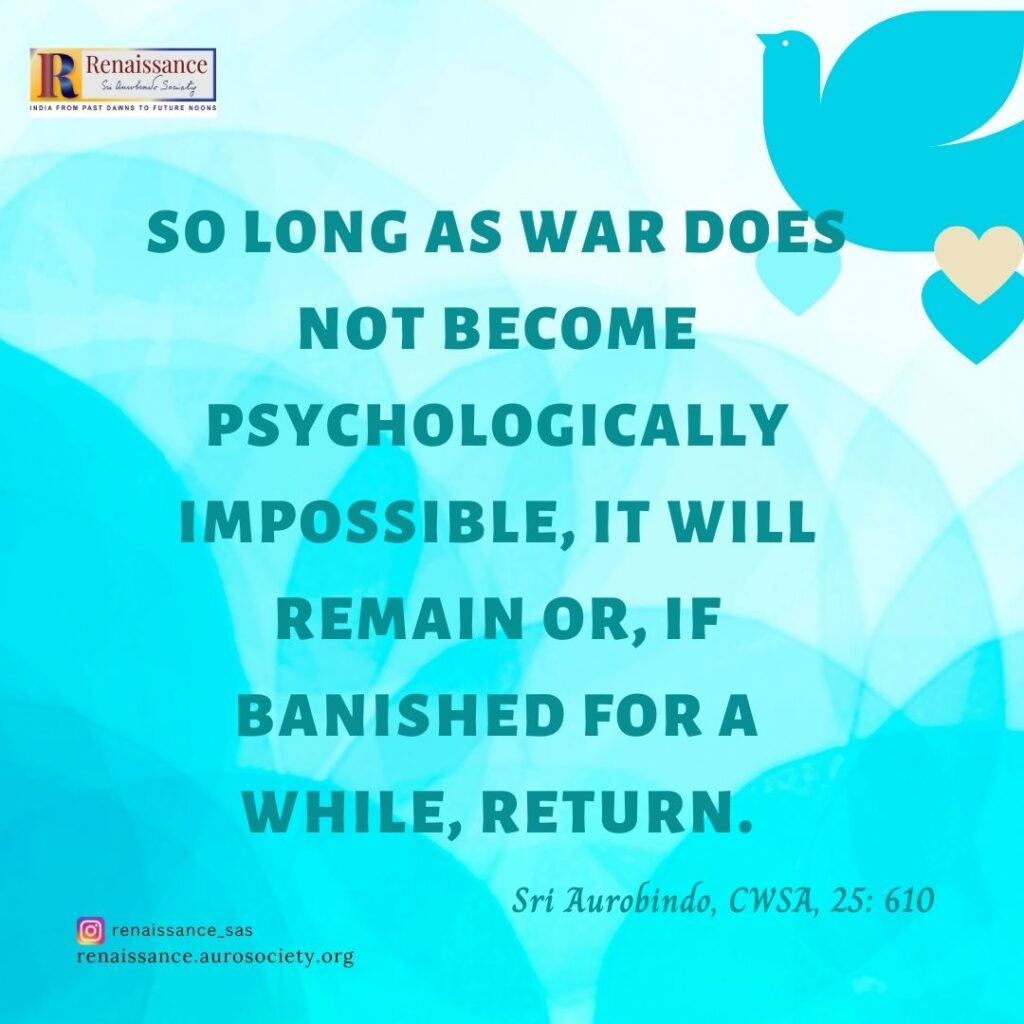Date: July 15, 2024
The integral perspective on conflict resolution calls for individual and collective praxis towards building a peaceful and harmonious society. This call is grounded in an evolutionary perspective, which holds that Nature is evolving, often towards a more positive, prosperous, and peaceful direction though the process might be tardy and conflictual due to our human follies. The evolution is happening, or using words from Savitri “a mystic slow transfiguration works”, though the process might not be visible to our naked eye due to avidya.
Such an evolutionary outlook might not have an immediate utilitarian significance, but a deeper analysis would reveal to us its profound spiritual significance for conflict resolution.
To give a mundane example, cars and computers have immediate utilitarian significance: one uses a car to make travel faster and uses Internet technology to send a message to faraway places in seconds. The integral perspective would tell us that these material goods such as the car or the computer, must have a founding governing principle. It would ask, cars and computers to what end? How does one use a car or a computer and for what purpose?
In May 2022, a young man drove his car hundreds of miles to shoot people in a shopping mall in Buffalo city in the USA, and, before that, he used computer and Internet technology to learn more about hate politics to give a concrete shape to his devious design. A narrow, hate-filled mind would drive the car to kill the people. A more open mind, or a better-evolved mind, would use the car for a better purpose, for example, to spread the message of peace, love and belonging.
The integral perspective on conflict resolution would tell us that individuals and their societies must gear their energies to take part deliberately in this evolutionary process. There is no other way, as the Mahayogi would tell us emphatically, it is “the inner war without escape.” Or, to use a term from the epic Mahabharata, the Kurukshetra, the battlefield, is not just a battlefield close to Delhi, but it is within us; the battle is going within us, and in this battle, in this process of evolution, the individual must take part actively and consciously so that higher realizations, including the realization of a peaceful and harmonious global society, are not just be a matter of speculation but a concrete reality.
To put in another way, so far the individual mind does not realize its identity with the universal mind, so far the individual soul does not consciously identify itself with the universal soul, the egoistic mind with its limited capabilities would head toward conflict, whether visible or invisible.

Sri Aurobindo would encourage us to continuously aspire and hope and work to transform our limited and dividing nature through the power of higher consciousness. He would write these lines for us, the struggling minds, who despite realizing their limitations and aspiring for higher consciousness, falter:
Yet Light is there; it stands at Nature’s doors:
It holds a torch to lead the traveller in.
It waits to be kindled in our secret cells;
It is a star lighting an ignorant sea,
A lamp upon our poop piercing the night.
As knowledge grows Light flames up from within:
It is a shining warrior in the mind,
An eagle of dreams in the divining heart,
An armour in the fight, a bow of God. (Savitri, p. 626)
Individuals and their groups urgently need a fundamental transformation, not just ad hoc change or mechanical modifications. Ad hoc changes or mechanical modifications might have temporary value, but they cannot ensure enduring conflict resolution. Also, that change or transformation must not be equated with sannyasa or renunciation, leaving life as it is, or entering a cave and meditating there.
The integral perspective on conflict resolution would call for praxis in the spirit of yoga. More importantly, it tells us that one does not need to belong to a particular religion or follow a fixed set of practices and rituals to participate in this conflict transformation process, for such a prescription would undermine the very core, the very integral approach. Such an approach is not only applicable to individual or interpersonal conflicts or communal or intergroup conflicts but also larger intrastate or interstate conflicts.
Sri Aurobindo’s life demonstrated that he worked ceaselessly, whether as a professor, poet and politician, leader of the freedom struggle, or as harbinger of New Age in Pondicherry, to give a concrete shape to his integral vision. His call for human individuals and their collectivities to examine themselves, to look within, to study their minds and the roots of their action, to examine whether they are adopting a larger, integral, picture while jumping into action, whether they are following the larger principles of love and brotherhood while acting, are something worth considering. These few lines from Savitri beautifully reflect Aurobindonian hope for humanity :
All our earth starts from mud and ends in sky,
And Love that was once an animal’s desire,
Then a sweet madness in the rapturous heart,
An ardent comradeship in the happy mind,
Becomes a wide spiritual yearning’s space.
A lonely soul passions for the Alone,
The heart that loved man thrills to the love of God,
A body is his chamber and his shrine.
Then is our being rescued from separateness …(Savitri, p. 632)
Only when our being, individual as well as collective, is ‘rescued from separateness’, true divine comradeship and peaceful society could be established.
***
~ Debidatta Aurobinda Mahapatra, PhD
The author is a Professor of Political Science at the Florida State College at Jacksonville, USA
